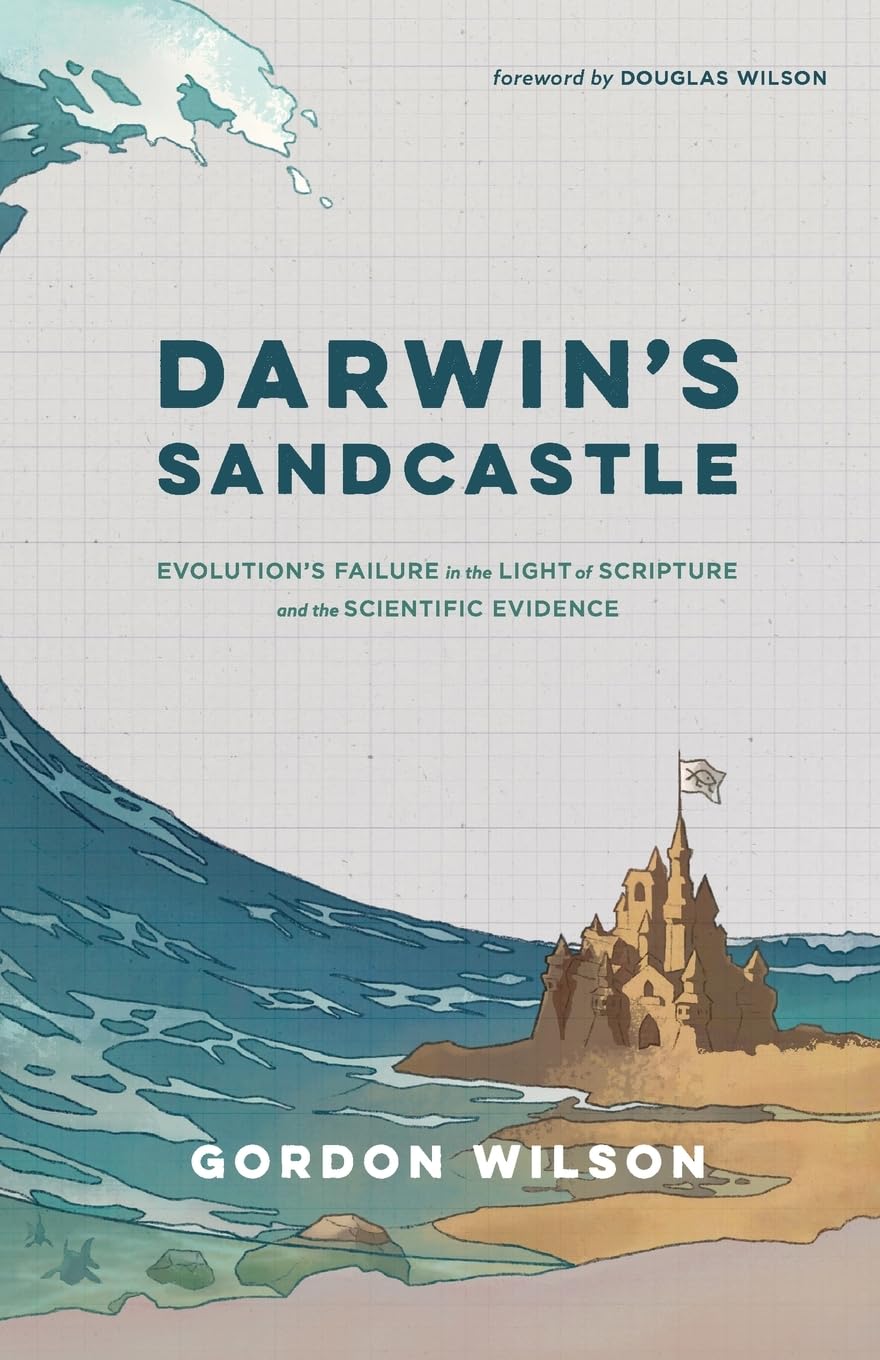FEATURED BOOKS AND DVDS
Paperback / $22.00 / 138 Pages / full colour
A new idea makes it work.
An invention is a new kind of object which works to accomplish a task and which requires particular knowledge to develop. Moreover, an invention is something in which the various parts must work together to accomplish the desired specific task.
For example, according to Douglas Axe: “Ordinary physical causes seem adequate for explaining things that aren’t task oriented (things like atoms and stars and tornadoes), but our design intuition tells us those causes can’t explain [things that work].” [Undeniable: How Biology Confirms our Intuition that Life is Designed. 2016 pp. 300. See p. 87] And as far a living creatures are concerned “[E]ach new form of life amounts to a stunning new invention, and since the hallmark of invention is functional coherence [all parts working together] – which accidental causes can’t explain – we rightly see each form as a distinct masterpiece.” [p. 193]
As an example of what lies behind the process of invention, consider the story of Guglielmo Marconi’s invention of wireless communication about 1896. The fact is that he had an idea and others did not. Thus, in a biography of Marconi we read: “What set Marconi apart from the rest was that he saw wireless communication in his mind’s eye, quite literally as telegraphy without wires……. It was Marconi who made the leap from Hertz’s lab experiments to practical wireless telegraphy using electromagnetic waves as the medium of communication. This was his original contribution.” All the equipment pieces were available, but Marconi had the idea to put them together to produce a radically new invention. [Marc Raboy. 2016. Marconi. pp. 863 See p. 52]
In the same way as Marconi’s wireless is an invention, each molecular machine (and entire life form) represents a new invention. The thing that makes these machines (and organisms) work is the idea of how to piece the parts together to produce a specific function. In nature we see the work of God, the incredible designer!
Order OnlinePaperback / $6.00 / 55 Pages
A new idea makes it work.
An invention is a new kind of object which works to accomplish a task and which requires particular knowledge to develop. Moreover, an invention is something in which the various parts must work together to accomplish the desired specific task.
For example, according to Douglas Axe: “Ordinary physical causes seem adequate for explaining things that aren’t task oriented (things like atoms and stars and tornadoes), but our design intuition tells us those causes can’t explain [things that work].” [Undeniable: How Biology Confirms our Intuition that Life is Designed. 2016 pp. 300. See p. 87] And as far a living creatures are concerned “[E]ach new form of life amounts to a stunning new invention, and since the hallmark of invention is functional coherence [all parts working together] – which accidental causes can’t explain – we rightly see each form as a distinct masterpiece.” [p. 193]
As an example of what lies behind the process of invention, consider the story of Guglielmo Marconi’s invention of wireless communication about 1896. The fact is that he had an idea and others did not. Thus, in a biography of Marconi we read: “What set Marconi apart from the rest was that he saw wireless communication in his mind’s eye, quite literally as telegraphy without wires……. It was Marconi who made the leap from Hertz’s lab experiments to practical wireless telegraphy using electromagnetic waves as the medium of communication. This was his original contribution.” All the equipment pieces were available, but Marconi had the idea to put them together to produce a radically new invention. [Marc Raboy. 2016. Marconi. pp. 863 See p. 52]
In the same way as Marconi’s wireless is an invention, each molecular machine (and entire life form) represents a new invention. The thing that makes these machines (and organisms) work is the idea of how to piece the parts together to produce a specific function. In nature we see the work of God, the incredible designer!
Order OnlineHardcover / $52.00 / 433 Pages
A new idea makes it work.
An invention is a new kind of object which works to accomplish a task and which requires particular knowledge to develop. Moreover, an invention is something in which the various parts must work together to accomplish the desired specific task.
For example, according to Douglas Axe: “Ordinary physical causes seem adequate for explaining things that aren’t task oriented (things like atoms and stars and tornadoes), but our design intuition tells us those causes can’t explain [things that work].” [Undeniable: How Biology Confirms our Intuition that Life is Designed. 2016 pp. 300. See p. 87] And as far a living creatures are concerned “[E]ach new form of life amounts to a stunning new invention, and since the hallmark of invention is functional coherence [all parts working together] – which accidental causes can’t explain – we rightly see each form as a distinct masterpiece.” [p. 193]
As an example of what lies behind the process of invention, consider the story of Guglielmo Marconi’s invention of wireless communication about 1896. The fact is that he had an idea and others did not. Thus, in a biography of Marconi we read: “What set Marconi apart from the rest was that he saw wireless communication in his mind’s eye, quite literally as telegraphy without wires……. It was Marconi who made the leap from Hertz’s lab experiments to practical wireless telegraphy using electromagnetic waves as the medium of communication. This was his original contribution.” All the equipment pieces were available, but Marconi had the idea to put them together to produce a radically new invention. [Marc Raboy. 2016. Marconi. pp. 863 See p. 52]
In the same way as Marconi’s wireless is an invention, each molecular machine (and entire life form) represents a new invention. The thing that makes these machines (and organisms) work is the idea of how to piece the parts together to produce a specific function. In nature we see the work of God, the incredible designer!
Order OnlinePaperback / $28.00 / 256 Pages
A new idea makes it work.
An invention is a new kind of object which works to accomplish a task and which requires particular knowledge to develop. Moreover, an invention is something in which the various parts must work together to accomplish the desired specific task.
For example, according to Douglas Axe: “Ordinary physical causes seem adequate for explaining things that aren’t task oriented (things like atoms and stars and tornadoes), but our design intuition tells us those causes can’t explain [things that work].” [Undeniable: How Biology Confirms our Intuition that Life is Designed. 2016 pp. 300. See p. 87] And as far a living creatures are concerned “[E]ach new form of life amounts to a stunning new invention, and since the hallmark of invention is functional coherence [all parts working together] – which accidental causes can’t explain – we rightly see each form as a distinct masterpiece.” [p. 193]
As an example of what lies behind the process of invention, consider the story of Guglielmo Marconi’s invention of wireless communication about 1896. The fact is that he had an idea and others did not. Thus, in a biography of Marconi we read: “What set Marconi apart from the rest was that he saw wireless communication in his mind’s eye, quite literally as telegraphy without wires……. It was Marconi who made the leap from Hertz’s lab experiments to practical wireless telegraphy using electromagnetic waves as the medium of communication. This was his original contribution.” All the equipment pieces were available, but Marconi had the idea to put them together to produce a radically new invention. [Marc Raboy. 2016. Marconi. pp. 863 See p. 52]
In the same way as Marconi’s wireless is an invention, each molecular machine (and entire life form) represents a new invention. The thing that makes these machines (and organisms) work is the idea of how to piece the parts together to produce a specific function. In nature we see the work of God, the incredible designer!
Order OnlinePaperback / $16.00 / 189 Pages / line drawings
A new idea makes it work.
An invention is a new kind of object which works to accomplish a task and which requires particular knowledge to develop. Moreover, an invention is something in which the various parts must work together to accomplish the desired specific task.
For example, according to Douglas Axe: “Ordinary physical causes seem adequate for explaining things that aren’t task oriented (things like atoms and stars and tornadoes), but our design intuition tells us those causes can’t explain [things that work].” [Undeniable: How Biology Confirms our Intuition that Life is Designed. 2016 pp. 300. See p. 87] And as far a living creatures are concerned “[E]ach new form of life amounts to a stunning new invention, and since the hallmark of invention is functional coherence [all parts working together] – which accidental causes can’t explain – we rightly see each form as a distinct masterpiece.” [p. 193]
As an example of what lies behind the process of invention, consider the story of Guglielmo Marconi’s invention of wireless communication about 1896. The fact is that he had an idea and others did not. Thus, in a biography of Marconi we read: “What set Marconi apart from the rest was that he saw wireless communication in his mind’s eye, quite literally as telegraphy without wires……. It was Marconi who made the leap from Hertz’s lab experiments to practical wireless telegraphy using electromagnetic waves as the medium of communication. This was his original contribution.” All the equipment pieces were available, but Marconi had the idea to put them together to produce a radically new invention. [Marc Raboy. 2016. Marconi. pp. 863 See p. 52]
In the same way as Marconi’s wireless is an invention, each molecular machine (and entire life form) represents a new invention. The thing that makes these machines (and organisms) work is the idea of how to piece the parts together to produce a specific function. In nature we see the work of God, the incredible designer!
Order Online







